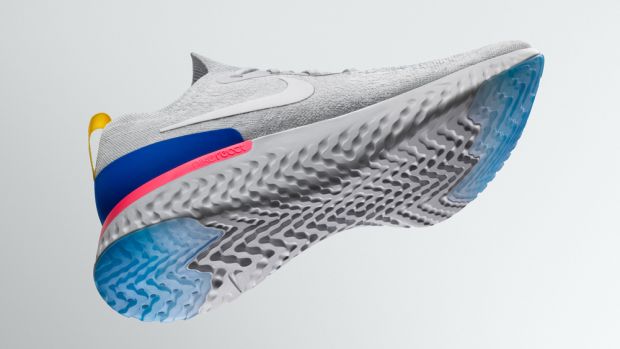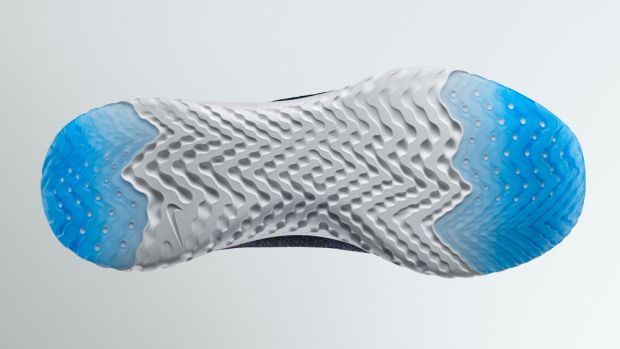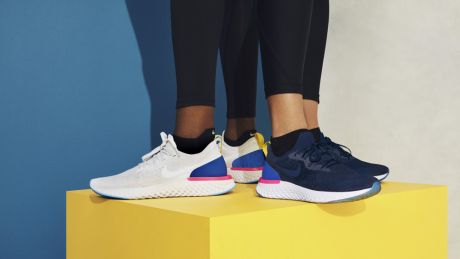You can trust Coach
There are a lot of choices to make whenever you buy a new pair of running shoes, ranging from the superficial – colour and style are important, don’t let anyone tell you otherwise – to the technical details like the weight, offset, the type of foam used and so much more. The result is always some sort of compromise. If you want a lightweight, responsive racer, you have to sacrifice cushioning and durability, and vice versa.
However, shoe companies have recently been locked into an arms race to find a foam that does it all. A foam that is so lightweight that you can pack loads of it into a shoe to make it supportive without making it clunky, and somehow both springy and soft. The perfect all-purpose, everyday running shoe, in short. The Epic React is Nike’s attempt at that shoe.
To check on those claims I tried to vary my runs as much as possible in my first few outings in the React. I went on a few short runs at various paces, then a 13km tempo run and a 25km easy run. I was impressed on every occasion.
The cushioning is plentiful and it’s clear how spongy and soft the ride is when you slow things down, especially if you’re a heelstriker. Then, when I increased my pace, it was the smooth heel-to-toe transition and springiness of the React that came to the fore, rather than the softness.
See related
- The Best Nike Running Shoes For Every Type Of Runner
- Nike React: A Running Shoe For Everyone And Every Run
- The Best Running Shoes

Nike isn’t the first shoe manufacturer to have managed to nail both responsiveness and cushioning in a running shoe, but the React feels and is impressively light (239g) compared with equivalent shoes that have flagship foam tech, like the Adidas Ultra Boost (310g) or the new Under Armour HOVR Phantom (300g) and Sonic (272g). That makes it a more attractive option for fast sessions and race day.
It was on the tempo run that the React really shone. In the midst of an arduous marathon training plan when I’ve been dreading my weekly tempo outing, I bounced through 13km almost – almost – merrily in the React. If you like a very stiff and responsive shoe, the React isn’t that, but it’s a great shoe for maintaining your pace on longer runs even if the softness does slightly compromise top speed over short distances.
Nike also claims that the React is more durable than other running shoes and that it will feel as springy after 800km as it does straight out of the box. After just 50km in them I can’t testify to that, but it’s good to see a brand focusing so explicitly on the lifespan of its shoes, especially when this one costs comfortably over £100.
The flyknit upper on the React is breathable and fits snugly, I’d say perhaps a little too snugly around the midfoot if you don’t take a moment to adjust the laces all the way down, but once you do that it has a comfortable sock-style fit.

There isn’t a huge amount of traction from the sole and when I ran on wet pavements I found that my feet would slip slightly on any especially slick sections. Not enough to send you over, but enough to knock you off your stride. I’d stay off the trails – this is a road runner.
The React is not a racer and doesn’t match the speed chops of Nike’s expensive (and consistently out of stock) Vaporfly 4% or the more accessible Zoom Fly but if you, like me, value a good chunk of cushioning and still want to run fast, it’s bang on. For casual runners, the React will tick every box for training and racing. For more obsessive types who have several shoes in their arsenal, it’s a great pick for easy, tempo and long runs, with something faster held back for sprints and races.
£130, buy on nike.com (available from 22nd February at 7:30am)

Nick Harris-Fry is a journalist who has been covering health and fitness since 2015. Nick is an avid runner, covering 70-110km a week, which gives him ample opportunity to test a wide range of running shoes and running gear. He is also the chief tester for fitness trackers and running watches, treadmills and exercise bikes, and workout headphones.

